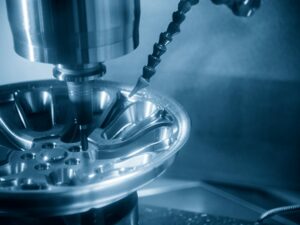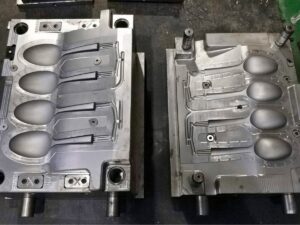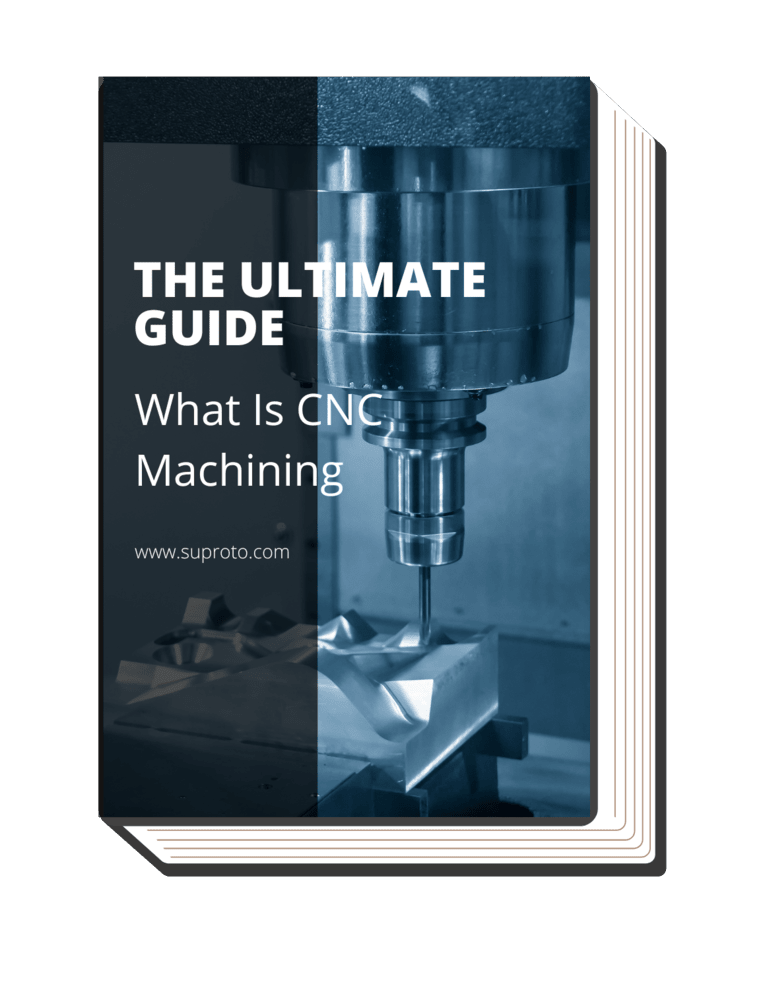Are you fascinated by CNC machining and pondering the implications of ‘injection mold’? The term might be a common one in the manufacturing industry, but its true meaning often eludes many. Have you come across this term, only to find yourself intrigued about its actual role in the manufacturing process?
Injection molds are a key element in the world of manufacturing, yet numerous business owners grapple with understanding their function, structure, and benefits. In this article, we’ll explore injection molds, their types, benefits, applications, challenges, and maintenance. With this knowledge, you can make informed business decisions.
So, without further delay, let’s embark on this journey!
1. Understanding Injection Molds
Definition and Purpose
Injection molds are essential manufacturing tools used in injection molding to mass-produce identical parts from various plastic materials. Just as an architect needs blueprints to build a structure, manufacturers like Suprotos need injection molds to create products. I’m sure you’re with me on this one, think of them as the ‘blueprints’ for your final product.
Basic Components of an Injection Mold
The basic components of an injection mold include the injection mold cavity, gate, runner, and sprue. Now, this is important. The injection mold cavity is where the molten material is injected, and the final product is formed. The gate is the entry point for the molten material. The runner and sprue guide the molten material from the machine to the cavity. Essentially, they work together to shape your product.
2. Advantages of Injection Molding
Injection molding is a manufacturing process used to produce plastic parts in large volumes. It involves injecting molten material, typically thermoplastics, into a mold cavity where it cools and solidifies to form the desired shape. There are several advantages of injection molding, which make it a popular choice for mass production. Let’s explore these advantages in the following:
Versatility and Flexibility
Injection molding, a popular manufacturing process, is celebrated for its adaptability and range. Its versatility refers to the capacity to create intricate, detailed shapes with precision, something many other manufacturing techniques struggle with. How awesome is that? With its wide material range, from plastic to metal, injection molding offers diverse product possibilities, making it a top choice for various manufacturing needs.
Cost Efficiency
Injection molding is a cost-effective manufacturing method, especially for producing large quantities of identical parts. As per Deskera, despite the initial high costs of tooling and molds, plastic injection molding becomes significantly more cost-effective as production volume rises. This means that although the initial setup cost may be high, the per-unit production cost is relatively low.
High Production Rates
Due to its automated nature, injection molding boasts exceptional production rates, capable of manufacturing a substantial number of parts within a short timeframe. But guess what I realized just in the nick of time. This makes it highly suitable for mass production, providing a significant advantage for businesses facing high demand and requiring swift manufacturing turnaround.
3. Types of Injection Molds
Injection Molds involve injecting molten plastic material into a mold cavity, where it cools and solidifies to form the desired shape. There are various types of injection molds that are used based on the requirements of the product being manufactured. These molds can be categorized into several types, each with its own unique characteristics and applications:
Two-Plate Injection Mold
The two-plate injection mold, as the name suggests, is made up of two plates. One plate is stationary while the other moves to eject the finished part. This type of mold is simpler and less expensive than others, making it a cost-effective option for many manufacturing needs. For example, if cost optimization is a priority for your project, the two-plate injection mold can be a reliable choice.
Three-Plate Injection Mold
The three-plate injection mold includes an additional plate that separates from the rest of the mold to allow the part to be ejected more easily. Here’s the big secret: This design solution enables the manufacturing of more complex shapes. It empowers manufacturers to produce highly intricate parts, providing businesses with unparalleled flexibility in their product designs.
Hot Runner Injection Mold
The hot runner injection mold, which is also known as a runner-less system, maintains the molten plastic in a liquid state. It prevents the waste of material and accelerates the molding process. But wait, there’s more. Businesses looking to maximize efficiency and reduce waste may benefit greatly from this type, as it not only optimizes material usage but also ensures consistent and efficient production.
4. The Injection Molding Process
Injection molding is a versatile manufacturing technique for producing plastic parts in large volumes with precision and efficiency. Molten plastic is injected into a well-designed mold cavity, undergoes controlled cooling and solidification, and is then ejected as the final part. Below are the following steps:
Step #1 Clamping
This step secures the injection mold in the molding machine, allowing the mold’s design to take form. Accurate positioning and secure clamping are vital for a successful outcome. For instance, paying close attention to detail in the clamping stage is essential for achieving precise and consistent results. Proper alignment of mold components is crucial to avoid misalignment or leakage that may impact the final product’s quality.
Step #2 Injection
During this step, the plastic material is melted and injected into the mold. The molten plastic flows into the mold cavity through the sprue and runners, filling it to create the desired shape. The quality of the resulting part depends on the meticulous control of injection pressure, speed, and volume. Precise control of these parameters ensures the production of high-quality parts that meet the desired specifications and requirements.
Step #3 Cooling
Once the molten plastic is injected into the mold, it starts to cool and solidify, taking the shape of the final product. The cooling time depends on factors such as the size, thickness, and type of material used. Let me break this down for you: Thicker parts, for instance, require longer cooling times as they retain more heat and need adequate time to solidify and achieve the desired structural integrity.
Step #4 Ejection
After the part is fully cooled and solidified, it undergoes a crucial ejection process. Let me lift the veil for you. It’s imperative to exercise careful control during this stage to prevent any damage to the part. Timely and precise ejection, carried out by our team of experienced technicians and supported by advanced machinery, ensures the production of a high-quality final product.
5. Applications of Injection Molds
The resulting product, known as an injection-molded part, has a precise shape and can be produced in large quantities with high accuracy and repeatability. The applications of injection molds are vast and span across various industries. Here are some key areas where injection molding finds extensive use:
Automotive Industry
Injection molds, such as those crafted by Suprotos, are used extensively in the automotive industry to manufacture a wide array of parts. These include crucial components like interior and exterior elements that contribute to the overall design and functionality of the vehicles we drive. From precision-engineered dashboard elements to reliable engine components, injection mold shapes, and bringing cars to life.
Consumer Goods
Consumer goods, such as toys, kitchen utensils, and home appliances, often utilize injection molds in their manufacturing process. But what does that mean? It’s a reliable method for efficiently mass-producing identical items with precision. So, the everyday items we use, ranging from common household tools to beloved toys, likely started their journey in an injection mold.
Medical and Healthcare
The medical and healthcare industry utilizes injection molds for producing diverse components ranging from surgical equipment to pharmaceutical packaging. According to Grand View Research, the global medical injection molding market size was estimated at USD 21.37 billion in 2022 and is anticipated to expand at a compound annual growth rate (CAGR) of 5.7% from 2023 to 2030.
Electronics Industry
Injection molds play a significant role in the electronics industry, creating parts for devices like smartphones, computers, and TVs. Guess what happened? The precision and scalability of injection molding make it an ideal process for meeting the demands of such high-precision industries. Consistently producing precise components has fueled the thriving electronics industry, meeting consumer expectations for advanced devices.
6. Common Challenges in Injection Molding
While injection molding offers numerous advantages, it also presents certain challenges that manufacturers need to address for successful production. Some common challenges in injection molding include:
Shrinkage and Warping
Shrinkage and warping, caused by uneven cooling, are common issues in injection molding. Here’s why that’s important. To minimize these risks, it’s crucial to maintain optimal temperature conditions and carefully design the mold. By incorporating thoughtful planning and precision techniques, such as cooling channels and proper material selection, these challenges can be effectively managed.
Injection Mold Design Considerations
The design of the injection mold is a complex process that involves careful consideration of various factors, including the part’s shape, size, material, and intended use. Proper planning is essential to avoid issues caused by inadequate design. Meticulous mold design sets the foundation for a smooth manufacturing process, ensuring high-quality parts that meet or exceed expectations.
Quality Control and Inspection
Quality control and inspection, are paramount in ensuring the consistent quality of manufactured parts. Regular checks prevent defective parts from reaching the market by identifying issues early. And the best part is, implementing a stringent quality control regimen guarantees that only top-quality products reach your valuable customers, reinforcing your brand’s reputation and customer satisfaction.
7. Maintenance and Care of Injection Molds
Proper maintenance and care are essential to prevent mold damage, reduce production downtime, and maintain product quality. The maintenance and care of injection molds involve several key aspects, including:
Cleaning and Inspection
By investing time and effort into a meticulous mold design, businesses lay the groundwork for a streamlined manufacturing process. A well-designed mold enables precise replication of intricate shapes, reduces the risk of defects, and enhances overall efficiency. So when do you use a meticulous mold design? The answer is clear: from the start, to pave the way for successful production and customer satisfaction.
The following table provides an overview of the stages and activities involved in cleaning and inspection during mold design, ensuring precise replication, defect prevention, and overall manufacturing efficiency.
| Stage |
Activity |
| Pre-Design Stage |
Gather requirements and specifications |
|
Conduct feasibility analysis |
| Mold Design Stage |
Create 3D CAD model of the desired product |
|
Consider material selection and mold construction |
|
Analyze and optimize mold design for efficiency |
|
Ensure proper gating and venting for molten material |
| Mold Cleaning |
Remove any residual material from previous use |
|
Inspect for any damage or wear |
|
Clean and prepare mold surfaces for production |
|
Lubricate moving parts if necessary |
| In-Process Inspection |
Monitor mold temperature and cooling |
|
Inspect and measure the produced parts |
|
Check for defects or abnormalities |
|
Adjust mold parameters if needed |
| Post-Production Inspection |
Inspect final products for quality and accuracy |
|
Identify any potential issues or defects |
|
Conduct dimensional and functional testing |
|
Document inspection results and make improvements |
Lubrication
Proper lubrication is a vital aspect in maintaining injection molds, as it effectively prevents friction and wear of the mold components, ensuring smoother operation and prolonging the mold’s lifespan. Here’s the bottom line, lubrication should be a routine part of the regular maintenance schedule for any mold, as it not only optimizes performance but also minimizes the risk of costly breakdowns or interruptions in production.
Preventive Maintenance
Preventive maintenance encompasses a proactive approach that includes regular checks and repairs to effectively extend the mold’s lifespan, preserve optimal performance, and ensure consistent part quality. By implementing a well-planned preventive maintenance program, manufacturers can identify and address potential issues early on, minimizing the risk of unexpected breakdowns, production delays, and costly repairs.
Dive Deeper Into Our Resources
Looking for more diverse product options? Browse through our handpicked selections:
For some insightful reads, we’ve curated a list of recommended articles just for you:
Still haven’t found what you’re looking for? Don’t hesitate to contact us. We’re available to assist and guide you.
Conclusion
In conclusion, injection molds are essential tools in the manufacturing industry, enabling businesses to produce identical parts at high volumes. Here’s something we can both agree on: With an understanding of their function, components, benefits, types, applications, and maintenance requirements, entrepreneurs and business owners like you are better equipped to optimize their production processes.
So, what’s my point? Remember that Suprotos, as a trusted CNC machining manufacturer, is here to support your business by providing high-quality injection molds designed to meet unique needs. Contact us and let’s work together to turn your production goals into a tangible reality.




